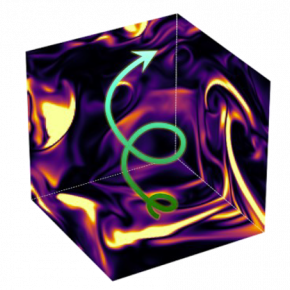The Universe as a Laboratory ________________________________________
Dark matter appears to behave like a non-colliding gas of massive particles. These characteristics are obtained in a wide variety of models, including the “WIMPs” motivated by particle physics beyond the Standard Model at the electroweak scale. Other candidates under investigation include straight neutrinos, axions, self-diffusing massive particles and heavy particles associated with phase transitions in the primordial universe. Extreme astrophysical environments and regions of high dark matter density are prime laboratories for its study.
Some candidates have the property of annihilating or disintegrating, phenomena accompanied by specific emissions (cosmic radiation, electromagnetic radiation and/or neutrinos); others, like axions, can be created by the conversion of thermal photons in stars or high-energy photons from large cosmic gas pedals; still others, like primordial black holes, can leave traces in cosmic radiation and/or gravitational wave events. The study of high-energy cosmic phenomena thus represents a pathway to the identification of dark matter.



